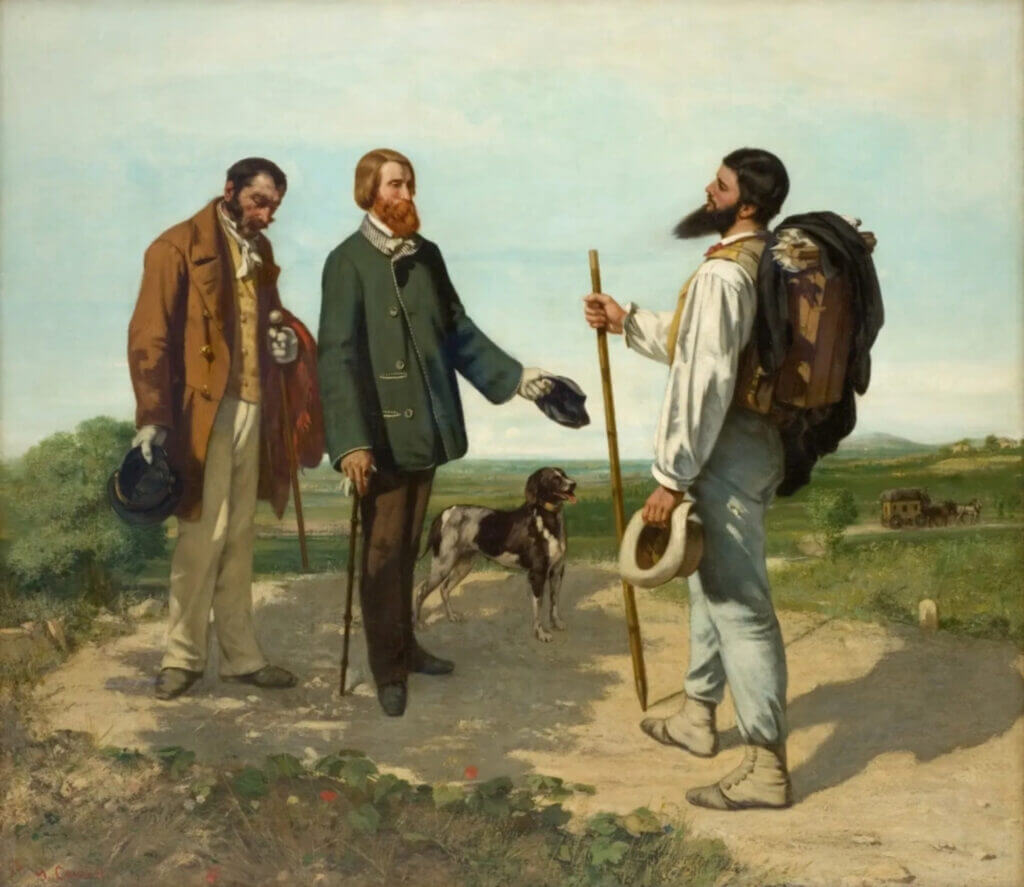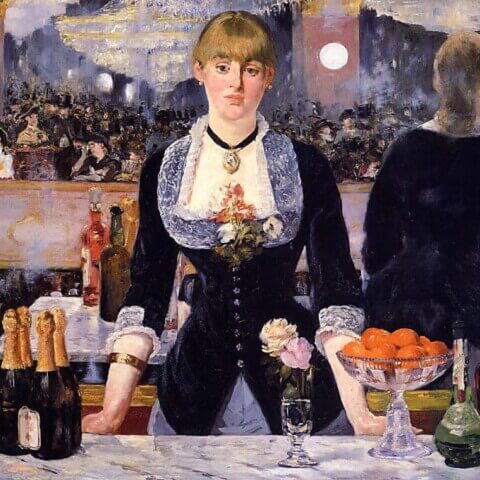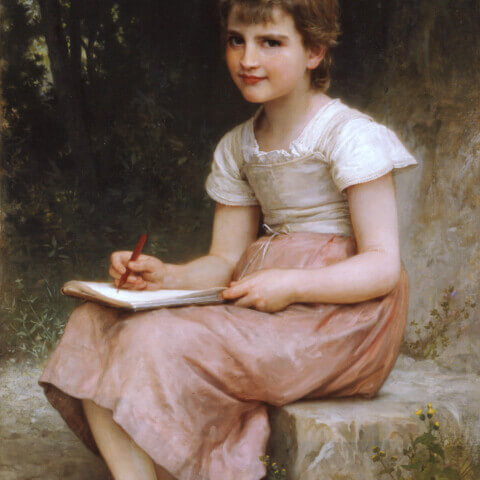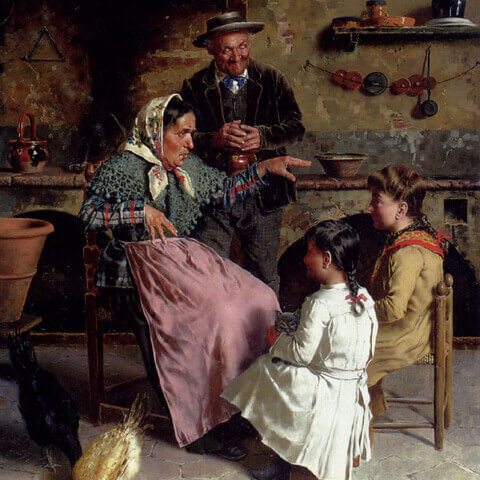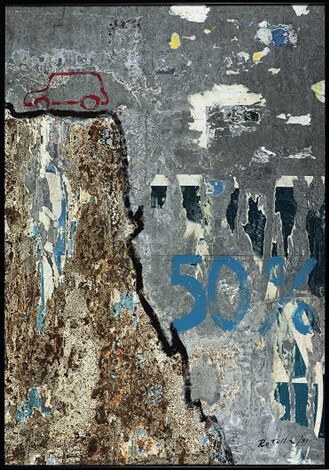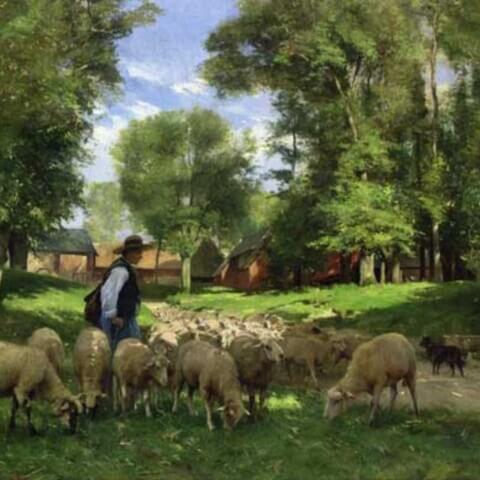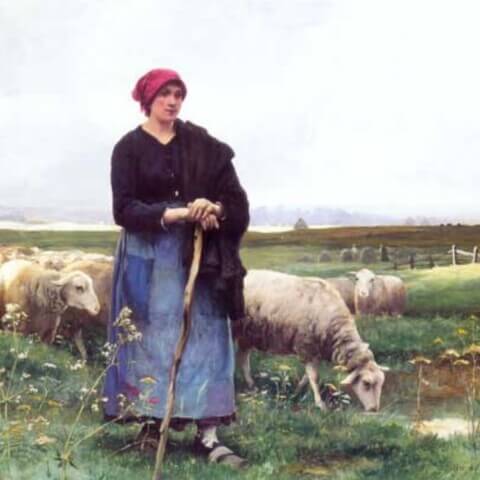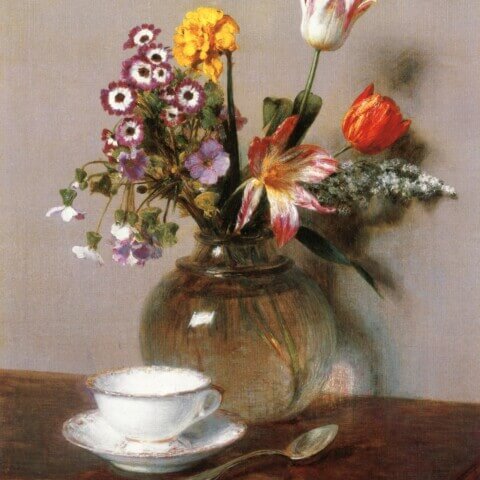Title: Gustave Courbet’s “The Meeting (Bonjour Monsieur Courbet)”: Challenging Power Dynamics in Art
Year Painted: 1854
Gustave Courbet’s painting, “The Meeting (Bonjour Monsieur Courbet),” created in 1854, holds a significant place in the artist’s body of work. This remarkable artwork portrays a meeting between Courbet himself and a wealthy patron set against the backdrop of the French countryside.
What makes “The Meeting” truly special is its defiance of traditional power dynamics within the art world. Courbet boldly depicts himself on equal footing with his patron, challenging the established norms that dictated the artist’s subservience to the wealthy elite. By positioning himself confidently alongside his patron, Courbet disrupts the traditional hierarchy, asserting his own worth and agency as an artist.
This painting captures Courbet’s rebellious spirit and his rejection of the prevailing conventions of his time. Through his self-portrayal as an equal, he subverts the expected roles and exposes the underlying power structures that governed the art world. “The Meeting” becomes a visual critique of the social and economic disparities present in society, offering a provocative commentary on class and privilege.
Moreover, the composition and execution of the painting are noteworthy. Courbet’s meticulous attention to detail is evident in the portrayal of the landscape and the figures. The rich colors, textured brushwork, and careful rendering of facial expressions add depth and realism to the scene. The countryside setting reflects Courbet’s preference for depicting the everyday and the ordinary, further emphasizing his commitment to capturing truth and authenticity.
“The Meeting” remains a thought-provoking piece that continues to resonate. It raises questions about power, class, and the artist’s role in society. Courbet’s audacity in presenting himself as an equal challenges the viewer to reconsider established hierarchies and the inherent biases within the art world. This painting invites contemplation and discourse on the complexities of art, social structures, and individual agency.
In conclusion, Gustave Courbet’s “The Meeting (Bonjour Monsieur Courbet),” painted in 1854, stands as a testament to the artist’s defiance of traditional power dynamics and his commitment to challenging societal norms. Its significance lies in its bold portrayal of Courbet as an equal to his patron, prompting reflection on the role of the artist and the inequalities that exist within the art world. “The Meeting” remains a symbol of Courbet’s rebellious spirit and his unwavering dedication to using art as a tool for social critique and change.
At our art gallery, we take pride in offering comprehensive global shipping to our esteemed clientele. We understand the significance of your art acquisitions and the need to transport them with utmost care. Hence, we are committed to delivering your chosen paintings to any address worldwide and free of any additional charge.
Our reliable courier service partners are experienced in handling precious art pieces and ensure that your painting reaches you in pristine condition. We offer fully insured, door-to-door delivery, providing you with peace of mind that your artwork is protected during transit.
Moreover, to accommodate your unique framing preferences, we offer the distinctive service of sending your purchased artwork directly to any framer across the globe. This enables you to have your painting framed locally by your trusted framer, reducing the risk of damage during transportation.
Regardless of your location or your framer’s, we strive to make the process as seamless as possible. It is our goal to provide exceptional service that caters to your needs and ensures the safe delivery of your valuable artwork.
We invite you to experience our hassle-free, worldwide shipping service, which is aimed at delivering your prized art pieces safely and efficiently, wherever you may be.
Similar paintings
Join our newsletter
Signup for our newsletter and receive our inspiration guide and 20% discount on your first order!

